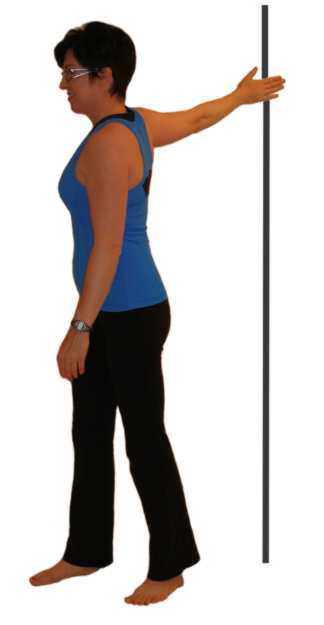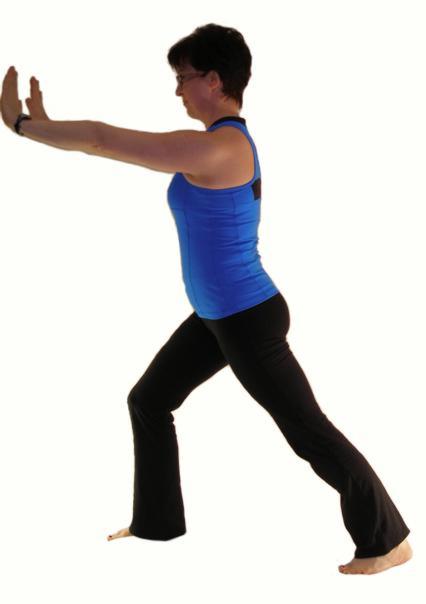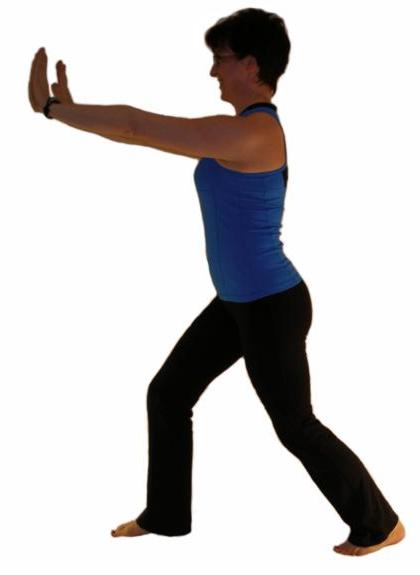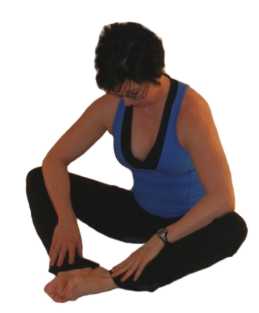Stretching Exercises for Swimmers
Below
is a series of exercises for swimmers to address common muscle
imbalances that occur
because of the repetitive nature of their sport. To go to "Stretching Exercises for
Swimmers" immediately
click here.
I
treat a lot of swimmers with the local aquatics club. The level of
competition is fierce. They swim 6 days a week, often more than once a
day with only 2 weeks off per year. With these high level swimmers
occasionally exceeding 20,000 meters per day in training, overuse
injuries frequently occur.
Contents
Why
should exercises for swimming include stretching
Dangers of
swimmers stretching
Medical
information about stretches for swimmers
Stretching
Exercises for Swimmers
Ways
to improve
your swimming
Common
Swimming Ailments
Why
you should swim
Lane
etiquette for swimmers

Why should exercises for swimmers include stretching
Good flexibility allows a swimmer to perform better for the following reasons:
- Greater mobility in some joints allows for kicking and recovery movements without disturbing body alignment therefore allowing for a more streamlined swim with less turbulence.
- Greater mobility in certain joints allows for the propulsive force to be sustained over a longer time.
- Greater flexibility may reduce energy expenditure and improve speed by decreasing intramuscular resistance.
Dangers of Swimmers stretching
Flexibility exercises for swimmers should concentrate on stretching the connective
tissues of the muscles, but not the tendons and ligaments. Sprains and
tears can result from ligaments and joint capsular structures being
stretched beyond their normal extensibility.
Swimmers should only stretch to the point where resistance is felt.
Stretching exercises for swimmers that should be avoided are those assisted by a team mate that stretch arms
up and forward from behind the back, and those stretches that force the
shoulders back at shoulder level. Both of these stretches force the
head of the humerus (long arm bone) forward against the tendons and
ligaments that become chronically inflamed in swimmers when they
develop tendonitis. It is therefore best to avoid stretching exercises
for swimmers that would exacerbate that condition.
Other exercises for swimmers that involve dangerous stretching are
stretches to the knees and hips. Although flexibility in these joints is
definitely an advantage in breaststroke, the potential for long term
harm is too great for me to recommend them.
Why you should swim
I often
encourage my
patients to
take up swimming or aquafit classes. Movement in the pool is
excellent for aiding recovery.
The bouyancy of the water relieves pressure on joints that are normally
weight bearing and adversely affected by high impact exercises.
When one is immersed to waist level your weight is
effectively
reduced
by half. When immersed to the chest this is reduced to 25%. When
immersed to the neck, you effectively weigh 10% of what you weigh on
land. This makes swimming the ideal exercise for those suffering from
arthritis, obesity, or fibromyalgia.
- Swimming will improve your muscular strength, improve activity tolerance and endurance, posture, flexibility, and cardiovascular fitness.
- Swimming is also an effective weight loss adjuvant.
- Swimming at a medium intensity can burn 200 calories in half an hour.
- Swimming will give you a whole body workout as it uses all major muscle groups.
- Water provides resistance to all movement so increases the work done in the water.
The sensation of weightlessness, the rhythm of the stroke and the
sensation of the water can be almost meditative and relaxing. It is a
great way to deal with stress.
The increased humidity in the air above the water aids those that
suffer from exercise induced asthma. A study by the NSW Asthma
Foundation found that of 73 children that entered a swimming program,
half of them were able to reduce the type or amount of medication they
required.
Swimming's a good method of recovery after long training sessions.
Swimming can be a light activity to promote recovery
and stimulate
blood circulation.
Swimming encourages flexibility. Exercises such as running and bicycling compress the spine; whereas, swimming encourages you to lengthen the body.
Medical information about exercises for swimmers
Prior to taking up swimming you should consult your family doctor. Conditions such as epilepsy other others that may cause fainting or dizziness should be discussed with your family physician. Otherwise, swimming is an excellent activity for those that have difficulty with land based or high impact exercises. Buoyancy of the water relieves pressure on joints and the humidity of the air aids those that suffer from exercise induced asthma.
How to improve your technique
There are swimming exercises you can do to help your technique, but it
is difficult to do this on your own. A swimming instructor can give you
feedback and one on one advice.
If you are consistently performing well during training but it's not
carrying over into better times at swim meets you may be looking at a
psychological barrier. You may be holding back to protect your
ego. At the end of a race you should be able to say you gave it your
all and realize that winning at the swim meet shouldn't determine
whether or not you feel bad, but rather about swimming your hardest and
knowing you did your best.
Some psychological tips are as follows:
- Keep your attention in your own lane and don't worry about what your competitors are doing. The more you think about what your neighbour is doing the more nervous you will become and that will affect your time.
- Think about what you are feeling as you move through the water - how much you are pulling, how much roll, etc. rather than "I've got to go faster".
- Stay focussed on what you are doing at the moment. Don't dwell on past times or focus too much on future goals. Aquire the discipline to recognize when you lose your focus and immediately bring it back.
- Staying calm is the secret to performing your best, so try and have fun.
- Don't worry about pleasing mom or dad or your coach. This performance anxiety will cause you to tense up.
- If you keep doing the same thing you will keep getting the same results. Ask your coach if there is something you can change.
Lane etiquette
When swimming in a public pool there are often rules that assist in the free flow of swimmers. Pools will often have lanes dedicated to faster swimmers and directions posted. If you are swimming and catch up to the swimmer in front of you allow them to pull aside and let you pass.
Ways to improve
Stretching Exercises for Swimmers
Shoulder stretching is well documented in the literature as a method to improve performance and prevent injury in swimming. As such swim coaches and the swimmers devote a lot of time to stretching.
Improve your stroke
Doing
drills during a few of your lengths will help improve your stroke. For
instance, using a flutter board to work on kicking.
By improving your stroke you will improve your swimming efficiency. You
will be able to swim the same distance with few strokes and in a
shorter period of time.
Include a warm up and warm down period
Do
a few lengths
at a slow
pace to allow your muscles to get used to the movement and warm them
up. This will help prevent injuries. Studies have shown that an active
warm up (as opposed to sitting in a warm room for a warm up) will
improve your times more than a passive warm up for your first swim
event. An active warm up brings oxygen and nutrients to the muscles and
improves nerve conduction.
A period of active recovery has been shown to result in better
performance in subsequent events. Studies have found that
swimming after your meet at a pace equal to your lactate threshold is
better than swimming around lazily and better than just sitting. You
can determine your lactate threshold roughly by estimating how fast you
think you could swim comfortably for an hour. Stretching during a warm
down also helps the muscles relax before the next race.
Improve stamina
You
can improve
your stamina
by training in sets. Swim a given number of lengths and then take a 30
second break. Increase your stamina by gradually increasing the number
of lengths in each set.
Use different strokes
By using a variety of different strokes you will use more muscle groups and minimize the repetitive stresses on the rotator cuff.
Set realistic goals
While most people are very keen to begin a new exercise program, like
any new activity it is best to start slowly. You can set
goals
for the distance you would like to achieve, or the time you would like
to swim a given distance. In the beginning it may be realistic to set
the goal of just getting to the pool twice a week.
Correct stretching is only one part of preventing and treating injuries
in a swimmer.
The purpose of stretching prior to a swim is to obtain full range in
the joints. Muscle may become tight between swim workouts and it is
important to ensure you have full range prior to any swimming. Even
small restrictions in a joint can lead to injury while swimming due to
the repetitive nature of the activity. Stretching after the swimming workout is
of course also important to increase flexibility.
Common Swimming Ailments
- Sprains and Strains
- Knee pain
- Shoulder pain
- Swimmer's ear
- Otitis Media
- Exostosis
- Foreign bodies in the ear
- Eczematous dermatosis
- Corneal edema or keratitis
- Conjunctivitis
- Exercise induced bronchospasm
- Infections
Stretching Exercises for Swimmers
Stretching Exercises for Swimmers: Posterior Shoulder Stretch
- Stand or sit with chest up and head in neutral position.
- Bring your right elbow up and pull it over to the left at shoulder level with the left hand.
- Hold this position for 30 seconds.
- Repeat on the other side.

Stretching Exercises for Swimmers: Tricep Stretch
- Standing or sitting raise your right hand up over your head.
- Bend the right elbow and grasp the right elbow with your left hand.
- Pull your right elbow to the left overhead.
- Hold this position for 30 seconds.
- Repeat on the other side.

Stretching Exercises for Swimmers: Mid Pectoralis Muscle Stretch
- Stand with your right side facing a wall or door frame.
- Put your right hand up on the wall, thumb facing up, at shoulder level.
- Slowly rotate your trunk to the left until a stretch is felt.
- Hold this for 30 seconds.
- Repeat this on the left.

Stretching Exercises for Swimmers: Lower Pectoralis Muscle Stretch
- Stand with your right side facing a wall or door frame.
- Put your right hand up on the wall overhead, thumb facing up.
- Slowly rotate your trunk to the left until stretch is felt.
- Hold this for 30 seconds.
- Repeat this on the left side.

Stretching Exercises for Swimmers: Latissimus Dorsi Stretch
- Stand facing a wall or pole about three feet back.
- Put both hands on the wall as high as you can reach, one hand on the other.
- Step back with one foot.
- Let your chest sag toward the floor while maintaining your hand position.
- Hold this for 30 seconds.

Stretching Exercises for Swimmers: Upper Pec and Anterior Deltoid Stretch
- Stand tall with your chest up.
- Reach behind and grasp both hands behind you.
- Pull your shoulders back and shoulder blades together.
- Lift your hands away from you with arms straight.
- Hold this for 30 seconds.

Stretching Exercises for Swimmers: Quadricep Stretch
- Standing, grasp your right ankle with your right or left hand behind you.
- Pull your foot up and your knee back.
- Hold this for 30 seconds.
- Repeat this on the left side.

Hamstring Stretch in Standing
- Stand and face a chair or table.
- Put your foot up on the chair.
- Keep your chest up and back straight.
- Bend forward at the hips until you feel a stretch in the back of your thigh.
- Hold this position for 30 seconds.
- Repeat on the other side.

Calf Stretches
- Stand about three feet from a a wall and put your right foot behind you ensuring your toes are facing forward.
- Keep your heel on the ground and lean forward with your right knee straight.
- Rotating the toes in and out slightly will target the medial and lateral parts of this muscle separately.
- Hold this for 30 seconds.

- Stand away from a wall and put your right foot behind you and be sure your toes are facing forward.
- Lean forward at the ankle while bending the right knee and keeping your heel on the ground.
- Because the knee is flexed, tension is taken off the gastrocnemius and placed on the soleus.
- Hold this for 30 seconds.
Repeat both of the above on the left side.

Hip Flexors Stretch
- To stretch the right hip flexors kneel on your right knee and put your left foot in front of you such that your left hip and knee are about 90 degrees.
- Put a noodle or board on the floor for your knee if you find this uncomfortable.
- Put your right hand on your right hip and push your right hip forward so that it is in front of your right knee.
- Keep your chest up and don't bend forward at the hips.
- Hold this for 30 seconds.
- Repeat this on the left side.

Long Hip Adductors
- Kneel onto your left leg or simply squat down on the left.
- Place your right foot in front of you to assume the lunge position.
- Slide your right foot out to the side and place both hands on the floor in front of you.
- Try to straighten the right knee and lean your body forward while relaxing your hips.
- Rocking the hips forward and back will change the pull slightly to get all long adductors.
- Hold this for 30 seconds.
- Repeat this on the other side.

Short Hip Adductors
- The quickest way to stretch the short adductors is to stretch them both at the same time in sitting.
- Sit on the floor with feet together, knees bent.
- Gently apply pressure to your thighs as you lift your chest up and bend forward at your hips.
- Try to maintain a neutral pelvic position. (Don't bend at the waist and don't let your tailbone roll under)
- Hold this for 30 seconds.

Neck Stretches
- Sit or stand with your chest up and looking straight ahead.
- Gently push your chin back while looking straight ahead(so that you have a double chin)
- Keep your head upright, don't look up or down. Keep eyes facing forward.
- While holding your chin back with one hand, use your other hand to reach over the top of your head.
- Stabilize your chin back as you gently pull the top of your head forward. This is a tilting motion.
- Hold this for 30 seconds.

- Sit or stand with your chest up and looking straight ahead.
- Reach over your head with your right hand.
- Gently pull your head over to the right side.
- Hold this for 30 seconds.
- Repeat this on the other side.
- If you feel pain or pinching on the right side doing this, stop. Your are no longer stretching but stressing joints. See your physical therapist.

- Sit or stand with your chest up and looking straight ahead.
- Look over your right shoulder.
- Gently apply overpressure to your jaw to assist in this movement.
- Hold for 30 seconds.
- If you experience any pain in the neck or jaw, stop and consult your physical therapist.
